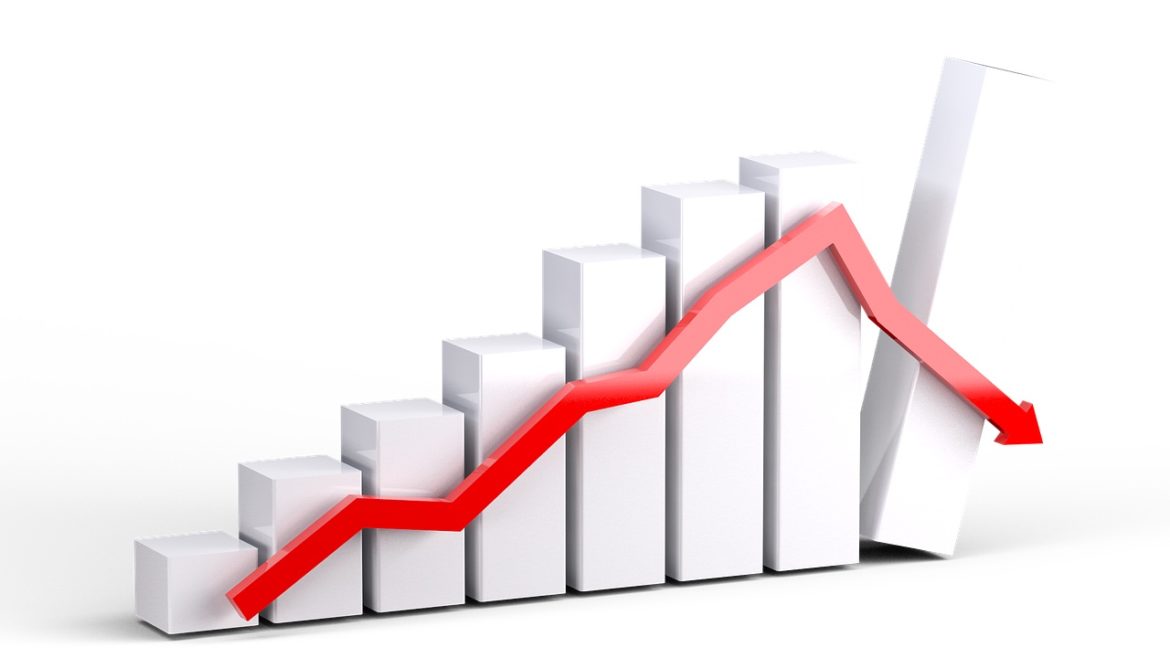Gold has all the potential to go unprecedentedly high. But silver will be gold on
Site:
Precious metals news
As the cost of living skyrockets and financial security feels like a distant dream for many, gold is catching more eyes...
 Saudi Arabia’s Stockpile of US Treasuries Has Fallen 41% Since Early 2020
Saudi Arabia’s Stockpile of US Treasuries Has Fallen 41% Since Early 2020Aug 17, 2023 - 08:03:39 PDT
Saudi Arabia's US Treasuries holdings have plummeted 41% since 2020, reaching their lowest levels in over six years with a $3 billion offload in June. In a similar move, China divested $11.3 billion in June. This downturn aligns with a broader shift among Gulf nations, signifying diminishing confidence in US financial assets. Such significant divestments could destabilize US interest rates and impact the broader financial framework.
Aug 17, 2023 - 07:42:20 PDT
Foreign investors sustained a record nine-day selloff of Shanghai and Shenzhen equities, leading to a 46.2 billion yuan ($208 million) downturn, the most pronounced since 2016. Driven by faltering economic data and property-sector instability, this trend not only dampens the outlook for China's market but also has global implications.
 Warren Buffett Keeps Dumping $Billions in Stock Sparks Concerns of Economic Crash
Warren Buffett Keeps Dumping $Billions in Stock Sparks Concerns of Economic CrashAug 17, 2023 - 06:59:43 PDT
Berkshire Hathaway, led by Warren Buffett, sold a net $8 billion in stocks between April and June, amassing a cash reserve of $147 billion and signaling increasing economic pessimism. Following a hefty $13.3 billion stock offload earlier this year, prominent experts like Steve H. Hanke and Robert Kiyosaki have voiced concerns. Hanke underscored a money supply contraction rate not seen since 1938.
Aug 17, 2023 - 06:11:36 PDT
US inflation-adjusted bond yields have soared to alarming levels not seen since the 2008 financial crisis, with real yields spiking to 185bps — the most since the Lehman Brothers debacle. This sharp ascent signifies increasingly burdensome borrowing conditions in the US. Rising real yields not only boost the allure of bonds but also cast a shadow over the stock market's prospects. As the Fed intensifies its interest rate hikes to combat persistently high inflation, ominous signs like an inverted yield curve hint at deeper economic turbulence ahead. Market experts warn of a potential downturn and lasting repercussions.
US households' excess savings from the pandemic era are anticipated to run out this quarter, warns the Federal Reserve Bank of San Francisco, potentially diminishing a major propellant of the US economy amidst rising inflation. Earlier research estimated $500 billion in excess savings as of March 2023. However, updated figures show less than $190 billion by June. This decline, combined with growing spending, lowered income data, and inflationary pressures, hints at economic headwinds, especially as the Fed continues its aggressive interest rate hikes.
First-time jobless claims in the US saw a slight decrease to 239k, but continuing claims rose above 1.7mm for the first time since early July, indicating potential instability in the labor market. Previous claims may have been inflated due to fraudulent filings in Ohio and expanded eligibility in Minnesota. Despite minor improvements, the labor market's strength seems disconnected from The Fed's policy actions.
Dishonest money is destroying our standard of living.What do I mean by "dishonest" money?I mean government fiat money that it can create out of thin air. This is inflation and it constantly eats away our purchasing power.
Good news! The recession is off!For months, economists predicted the Federal Reserve's rate hikes to fight price inflation would spin the US economy into a recession. But there is a growing consensus that the central bank can slay price inflation while guiding the economy to a "soft landing."Economists Bob Murphy and Jonathan Newman say, "Not so fast!"
If you want to know the "Science" behind what it would take for much higher Gold & Silver prices, this is a MUST-WATCH VIDEO. While we in the precious metals community are guilty of putting out extremely high price forecasts, this is based on a more scientific approach...
In Anglesey, Wales, metal detectorists have unearthed a first-of-its-kind treasure: 15 gold coins from the Iron Age. Named "staters", these coins were minted between 60 B.C. and 20 B.C. Their designs, deeply influenced by Macedonian gold coins of Philip II, king of ancient Macedonia, showcase the Greek god Apollo's bust on one side and a detailed two-horse chariot and rider on the other. Presumed to be used by the Corieltavi tribe, this discovery is now celebrated as a "treasure". Given such coins are rarely found in Wales, experts speculate they may have been religious offerings. This remarkable collection will soon grace the Oriel Môn museum in Anglesey.
Aug 16, 2023 - 12:39:13 PDT
As August 2023 unfolds, US Industrial Production for July has merely reached 2007 levels, despite extensive spending from Washington DC and significant stimulus from the Federal Reserve.
Is this the best result we could anticipate?
In year-over-year terms, US Industrial Production is on a decline, registering a decrease of -0.23%, even if it shows a slight month-on-month uptick.
FOMC Minutes Signal Hawkish Fed Fears "Significant Upside Risks To Inflation." Market expectations for The Fed have oscillated since the last FOMC meeting. Amid a shifting backdrop, traders are keenly watching for the Fed's growth and inflation stance. Despite the Atlanta Fed's optimistic +5.8% GDP growth forecast for Q3, the central bank's discussions suggest further rate hikes could be on the horizon. The labor market remains tight, and while some banks grapple with rising rates, the majority of the Fed's members seem inclined to adjust rates upwards to counteract inflation.
 Gold Maintains on the Lack of Confidence in the Health of the Global Economy
Gold Maintains on the Lack of Confidence in the Health of the Global EconomyAug 16, 2023 - 08:32:45 PDT
Gold rose on Wednesday due to a weaker dollar and dropping bond yields, regaining its position after a decline below $1,900. A strong British core inflation data for July pushed the pound up, offering gold short-term support against a softer dollar. As 10-year Treasury yields fell, the metal's appeal grew, especially with potential interest rate hikes to combat inflation. "The main factor slowing gold's decline is the lack of confidence in the health of the global economy with the latest data out of China adding to that negative sentiment," analyst Rupert Rowling said in a note.
 India and the UAE Transact First Oil Sale in Rupees: Why This Could Spell Doom for the Petrodollar
India and the UAE Transact First Oil Sale in Rupees: Why This Could Spell Doom for the PetrodollarAug 16, 2023 - 07:56:24 PDT
India bypassed the U.S. dollar in a recent trade with the UAE, raising questions about the dollar's declining global dominance. Indian Oil Corp. purchased 1M barrels of oil from the UAE using rupees, signaling a shift from standard dollar-based transactions. As nations like China and Russia also seek alternatives to the dollar, there's increasing doubt about the greenback's sustained global primacy. Treasury Secretary Janet Yellen remains confident, but these moves suggest potential challenges for the dollar.
The minutes of the Federal Reserve's policy meeting last month may indicate on Wednesday a growing uncertainty among policymakers about the U.S. economy's trajectory. After a rate increase in July to 5.25%-5.50%, Fed Chair Jerome Powell hinted at more hikes, despite recognizing potential deflationary factors. However, the minutes will likely show divided opinions on the necessity of further hikes. Some Fed officials have since indicated no more hikes are needed, while others are considering potential rate cuts. The mixed messaging from the Fed indicates increasing concerns about the stability of the U.S. economy and potential over-tightening of monetary policy.
US stocks fell sharply as part of a global sell-off on Tuesday. The Dow Jones dropped 1% due to potential stricter bank oversight, while both the S&P 500 and Nasdaq Composite decreased over 1%. Home Depot reported strong earnings but anticipated "continued pressure" on consumers, indicating a waning interest in home renovations. China's economic situation worsened, with its central bank cutting key interest rates to stimulate its flagging economy and halting the release of youth unemployment figures after continuous declines.
Target (TGT) slashed its annual profit expectations in its Q2 report, pointing to a troubling economic environment, imminent interest rate hikes, and the anticipated restart of student loan repayments. Despite a modest beginning to the back-to-school season, uncertainty hangs over the major shopping period ahead. Target's Q2 figures reveal a decline: net sales dropped 4.9% YoY, inventory plummeted 17%, and comparable sales saw a 5.4% reduction. Additionally, the company failed to repurchase any stock this quarter, and both the number of transactions and the average check size decreased. The full-year earnings per share forecast has been downgraded considerably.
 If China’s Economy Is Really in Trouble, What Does It Mean for The Global Economy
If China’s Economy Is Really in Trouble, What Does It Mean for The Global EconomyAug 16, 2023 - 05:54:25 PDT
Concerns are escalating regarding China's economic stability, drawing stark warnings from the West. US Treasury Secretary Janet Yellen labeled China's slowdown a significant "risk factor" for the US, while President Joe Biden described it as a "ticking time bomb." Parallels are being drawn to Japan's financial descent decades ago, suggesting severe repercussions for global economies. If China's decline is drastic, it could force the US Federal Reserve into hasty rate cuts. This paints a troubling picture given the interlinked nature of global economies.
July's housing data disappointed as Housing Starts slightly rose by 3.9% MoM, offset by a stark June downward revision. Building Permits barely increased, underperforming expectations with multi-family units at their lowest since Oct 2020. Meanwhile, despite a lag in Housing Starts, Construction Jobs remain near their 2022 peak. Additionally, mortgage rates have hit their highest since Dec 2001, further dampening home purchase applications.








